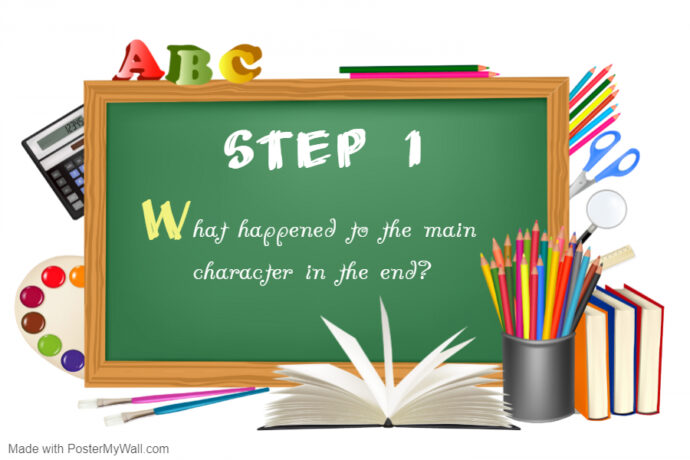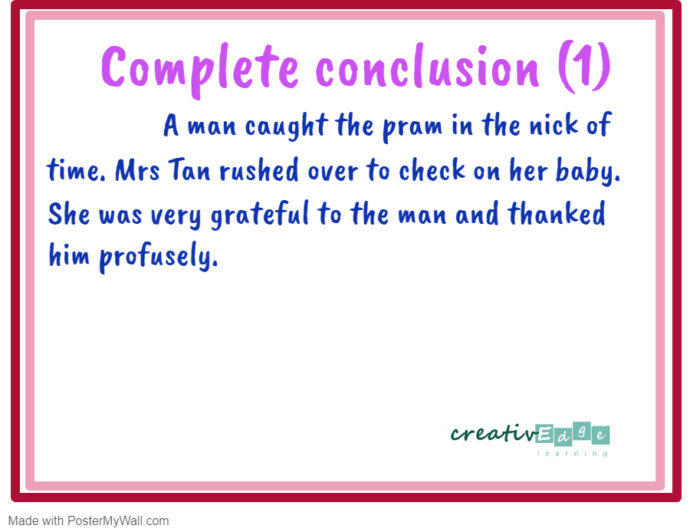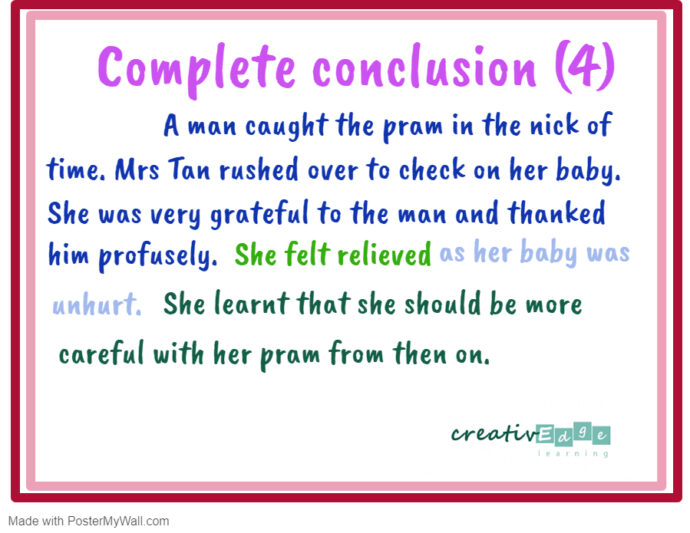Warning: Trying to access array offset on value of type bool in /home/u909215002/domains/creativelearning.com.sg/public_html/wp-includes/media.php on line 1713
Warning: Trying to access array offset on value of type bool in /home/u909215002/domains/creativelearning.com.sg/public_html/wp-includes/media.php on line 1713

Story structure for a Primary 2 English composition topic
When it comes to writing a Primary 2 English composition topic, parents do share that it can be a challenge at times for their children to write the composition with a proper structure.
Besides knowing how to start a story with a proper introduction, younger writers should also learn how to end a story with a complete conclusion paragraph.
Today we will talk about the WWHW strategy to write a complete conclusion paragraph.
How to write a conclusion paragraph
Step 1 – W for What

Pupils can always refer to Picture 4 to answer the question.
Pupils should think of 3 – 5 actions related to the main character by examining Picture 4 and imagining what happened beyond the picture.

In this case, it is necessary to state what happened to the pram which rolled down the slope. What did Mrs Tan do? What did she say to the man?

Step 2 – H for How

Since the man managed to stop the pram, the main character would naturally be glad that a disaster was averted.

Step 3 – W for Why

In this case, the main character would naturally be glad that a disaster was averted as her baby was safe and sound.

Step 4 – W for What

The lesson learnt by the main character is the most important part of the conclusion. It reflects the pupil’s understanding of expected behaviour by examining the chain of events in the 4 pictures.
Since the incident was a result of the main character chatting and not paying attention her pram, she should learn to be more careful in the future.

Join us for our Primary 2 English and writing classes which reinforce the writing skills for young writers to write with a proper story structure.



